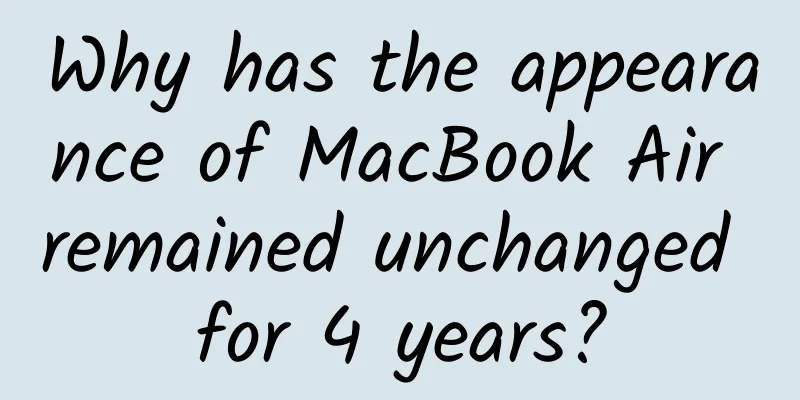Microsoft, you should be held accountable for the "pay whore" incident

|
The Alipay staff certainly didn't expect that one of their Weibo posts would attract 200,000 comments, all of which were insults. The story starts with the Apple Watch: After the release of Apple Watch, the official WeChat account of Alipay Wallet announced immediately that it would be compatible with Apple Watch, which naturally angered users of the WP version of Alipay who had not updated for a long time. "Since you have development staff, why don't you think of us?" While everyone was criticizing Alipay, the nickname "payment bitch" also spread. From the user's perspective, WP users' complaints are understandable. The WP version of Alipay Wallet has not been updated since August last year, and Alipay immediately adapted Apple's new products as soon as they were launched - for manufacturers, this is called profit-seeking; but for ordinary users, this is discrimination, and even a bit of fawning. In contrast, how can WP users who can't even grab the Spring Festival red envelopes not feel aggrieved? In fact, WP users have been unhappy for a long time. In addition to Alipay, the WP version of Baidu Tieba has also experienced the dilemma of not being updated for nearly a year; the WP version of WeChat has also had the problem of delayed message push for a long time... If this is the case for products from large manufacturers, the WP adaptation of small developers is even more imaginable. This "payment bitch" incident is just a concentrated outburst of the long-term pent-up anger of WP users, and behind the venting of anger, it highlights the increasing depression of the Windows Phone platform. The current situation of WP system: miserable and sad According to data released by IDC a year ago, WP, the world's third largest mobile operating system, only accounted for 2.7% of the market share last year, down 18% year-on-year. In contrast, Android still occupies the leading position with 81.5% of the market share. Although iOS only has 14.8% of the market share, which is a decline from 2013, the annual shipment of iOS devices has set a new record. It is not difficult to see the embarrassing position of the WP system from here - although it is known as the top three, there is a clear gap with the top two, and this gap is widening year by year. The decline of the WP system can also be seen from the equipment manufacturers. Several international mobile phone manufacturers, including Samsung and HTC, fled after producing a batch of WP phones. Huawei made it clear at the end of last year that it would stop producing WP phones in the future because it was not profitable. At the WP platform ecosystem level, in addition to the slow frequency of software updates, the software experience is also a problem. Social software such as WeChat and QQ have always had the problem of delayed push, and shopping software such as Suning.com and Amazon can only be described as rudimentary. Although Microsoft announced in August last year that the number of WP system software has exceeded 300,000, it is difficult to increase the quality of the increase. The functions and experience of WP version apps cannot be compared with the same ones on Android and iOS. As an independent mobile operating system, WP has its own unique advantages: stable and smooth system, equipped with excellent mobile office software. However, such a system has been unable to build a complete ecosystem, and has entered a vicious cycle dead end at the three nodes of users, developers and equipment manufacturers. What exactly did Microsoft do wrong? Let’s start with the compatibility of versions. WP was not late to appear. When it was first launched in 2010, Android and iOS had not yet gained a firm foothold, and Nokia's Symbian was still alive. WP entered the market at that time and, relying on the powerful ecosystem of Windows and smooth experience, it did win the favor of many users and developers. Manufacturers thought WP had great potential and tried it out. But then compatibility issues between different versions caused many users and manufacturers to flee: On October 11, 2010, Microsoft released Windows Phone 7 to replace the imperfect Windows mobile system. Although the two systems use the same Windows CE kernel, their programs are incompatible due to different interfaces. This time, the incompatibility was easily forgiven by most consumers. After all, after the improvement, the WP7 system has more powerful functions and a better experience. Moreover, the user base was small at that time, so it would not cause any trouble if they were unhappy. In June 2012, Microsoft launched WP8. This time the system update even changed the underlying kernel and directly adopted the same Windows NT kernel as the PC system, making the new system incompatible with all previous WP versions. This update not only made consumers who had already purchased WP phones very dissatisfied and made the cooperating manufacturers very angry, but also made Nokia, which had just bet on Windows Phone the year before, bleed and die completely. The two incompatibilities clearly show Microsoft's hesitation in positioning WP. They actually wanted to adopt a layout similar to Apple's at the beginning, that is, to use different systems on mobile and PC to achieve the best experience. But after breaking out of the dilemma, they hope to improve the unified ecosystem by connecting screens of different sizes. Microsoft's concept is correct, but it's a pity that consumers and manufacturers have to pay for the change in WP strategy. Microsoft's greed backfired when it thought about making money before its platform became big As the unshakable leader in PC operating systems, Microsoft has long been accustomed to the operating model of paid licensing of operating systems, and they have extended this model to mobile operating systems. For every smartphone using the WP operating system, Microsoft can earn a $25 licensing fee. 25 dollars may not seem like much, but considering that the cost of the iPhone 6's central processor is 37 dollars, the cost of the display assembly is 50 dollars, and the shipment volume of mobile phone devices is in the tens of thousands, this 25 dollar device licensing fee can be said to be a huge expense. When mobile phone manufacturers lose hope and patience in the WP system, they will definitely be unwilling to bear such expenses. Although Microsoft later announced the cancellation of licensing fees for devices below 9 inches, due to the small shipment volume of WP devices, WP devices are still unattractive for manufacturers as they cannot form economies of scale. A Huawei spokesperson once mentioned that no device manufacturer can make money from WP devices right now. This is very telling. Under such circumstances, app developers will certainly flee. Without users, they will have no income. Although Microsoft has invested some money to incentivize developers, compared with the high income of iOS and Android platforms, such incentives are like a drop in the bucket. According to people in the mobile game industry, the WP platform has always been a paradise for individual developers. A couple of developers in Shanghai have long occupied the top spot in the game rankings - why is this so? Because big companies are unwilling to invest in the WP platform! Therefore, the current situation of "payment bitch" is really caused by Microsoft itself. Can WP be reborn with the help of Win10? If there is any hope for WP users, it is Windows 10 which was just released this year. What changes can Win10 bring to Microsoft? Microsoft's official statement is "three screens and one cloud". The so-called three screens refer to the three screens of different sizes: TV, PC and mobile phone, and one cloud represents cloud computing. To achieve seamless connection between the three screens, the operating systems of these three screens must be unified - this is the mission of Win10. Microsoft will finally run a unified operating system on three screens of different sizes, and the APPs in the Windows App Store will also be able to run more conveniently on all devices. This is of course good for developers. Windows 10 makes it easier for developers to write applications using universal coding that can run on any Microsoft platform, achieving twice the result with half the effort. However, for WP users, this strategy does not solve any problems. The so-called "universal software" of Win10 is universal within the major Windows platforms, not universal for Android, iOS and WP. If the WP version of Alipay wants to achieve the functions of the Android version, it still needs Alibaba's WP developers to redevelop it based on Microsoft's new universal development platform, but is Alibaba willing to invest financial resources in a platform that is only starting to improve? This is still a question. The best solution at the moment is: Microsoft takes the initiative to negotiate with giant Internet companies such as BAT, make some compensation in other aspects, and help large companies such as Alibaba, Baidu, and Tencent develop some high-quality Win10 apps (such as Alipay). This will set a new benchmark for the WP ecosystem and also be a little compensation for WP version Alipay users who have been waiting for many years. |
<<: Loss of “WeChat” trademark: Why didn’t Tencent take it seriously?
>>: You don’t have any of these, and you say you can write code?
Recommend
Marketing strategy insights for 2021
Today I will share with you a report on marketing...
Tsinghua Mom Parent Classroom (Parents of 2-year-olds to 1st graders)
Tsinghua Mom Parent Classroom (Parents of 2-year-...
There are tea trees in the tea garden, so why plant grass?
Do you think there are only tea trees in a tea ga...
"Harbin, you make me feel strange..." What kind of city is Harbin?
In winter, there is a kind of happiness called &q...
Microsoft hints at further integration between Windows 11 and Android
In a new job listing, Microsoft has confirmed tha...
Will iPhone 6 push Samsung and HTC into the mid-range market?
Apple iPhone 6 was released as scheduled yesterda...
Are there really huge differences in IQ between different dog breeds?
Although they are both "domestic pet stars&q...
No wonder I can’t wear a turtleneck in winter! I found the cause of my long-standing problem...
Today, #Why do some people feel uncomfortable whe...
Bud parenting class: 10 abilities to let children take control of their lives
This is a course that teaches parents how to put ...
Figure out these 8 questions and save 50% of your advertising and marketing budget!
The content discussed in this article is applicab...
Men, beware! An extra 11cm in waist circumference can increase your cancer risk by 25%, but it’s different for women →
Compiled by: Gong Zixin Body shape and overweight...
Can Didi maintain its original intention in the post-unicorn era?
At 10pm on Saturday, Beijing Chaoyang Joy City en...
Durex's confession copywriting this time is absolutely amazing
Durex is so advanced this time. On May 20th, Dure...
The global EV battery market is expected to reach $67 billion in 2025
According to foreign media reports, a market rese...
How to set keywords for Xiaohongshu promotion notes!
On the Xiaohongshu platform, taking good notes is...









